Tripura: A Natural Paradise Waiting to Shine
Jayanta Debnath
October 4, 2025

Everyone agrees- Tripura is blessed with
rivers, hills, forests, and breathtaking natural beauty. Expansive reservoirs
and scenic landscapes make it one of Northeast India’s hidden treasures. Yet,
despite this wealth, Tripura’s tourism sector has not achieved its full
potential due to gaps in planning and infrastructure.
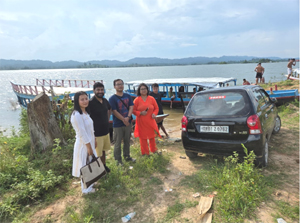 More than 53 years after becoming a
full-fledged state, Tripura still relies on central financial assistance for
nearly 90 percent of its annual budget. The state’s own revenues come largely
from rubber, ONGC’s gas, liquor sales, and its share of GST. In such
circumstances, if tourism were developed with vision, it could have provided a
strong and sustainable foundation for Tripura’s economy.
More than 53 years after becoming a
full-fledged state, Tripura still relies on central financial assistance for
nearly 90 percent of its annual budget. The state’s own revenues come largely
from rubber, ONGC’s gas, liquor sales, and its share of GST. In such
circumstances, if tourism were developed with vision, it could have provided a
strong and sustainable foundation for Tripura’s economy.
Political Narratives vs Tourism Progress:
Unfortunately, political blame games have
often delayed progress. The BJP blames the Left Front for not doing enough
during its decades in power, while the CPM argues that the BJP has failed to maintain
even existing infrastructure in the past seven-and-a-half years. TIPRA Motha
leaders have also pointed out the lack of attention to the tourism development
in the ADC areas.
Caught between these exchanges, development,
especially in tourism has not progressed as it should. Meanwhile, smaller
states like Goa and Sikkim have earned national and international recognition
through tourism, generating massive revenue. Tripura, with its natural charm,
can achieve the same if efforts are focused on infrastructure and inclusivity.
Rising Tourist Numbers: A Positive Sign:
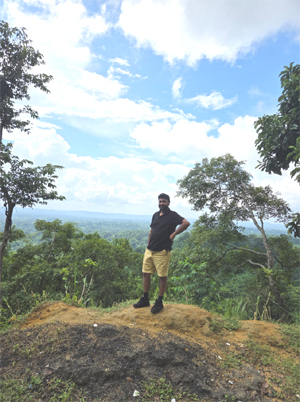
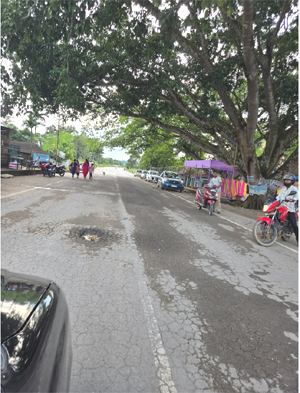 Chief Minister Dr. Manik Saha and Tourism
Minister Sushanta Chowdhury have both emphasized that tourism can provide
meaningful employment opportunities to the state’s youth. They note that under
the BJP’s seven and a half years of governance, tourist numbers have grown. In
2024 alone, domestic tourist arrivals reached nearly 6 lakh, while foreign
arrivals were around 91,000, placing Tripura just behind Sikkim in foreign
tourist arrivals.
Chief Minister Dr. Manik Saha and Tourism
Minister Sushanta Chowdhury have both emphasized that tourism can provide
meaningful employment opportunities to the state’s youth. They note that under
the BJP’s seven and a half years of governance, tourist numbers have grown. In
2024 alone, domestic tourist arrivals reached nearly 6 lakh, while foreign
arrivals were around 91,000, placing Tripura just behind Sikkim in foreign
tourist arrivals.
These figures highlight that Tripura’s
natural beauty is attracting attention. However, to convert this into
sustainable success, ground-level challenges need to be addressed.
Challenges at Major Tourist Spots:
Some of the most important destinations still
face infrastructure bottlenecks. At Chottakhola’s India-Bangladesh Maitri Park,
Udaipur’s Tripureswari Temple, Unakoti, Chabimura, and Dumboor’s Narikel Kunja,
visitors encounter problems. Many sites lack quality hotels and guest houses.
Pathways to boating points and ghats remain in poor condition.
For senior citizens and differently-abled
visitors, accessibility is a serious issue. At Chabimura and Narikel Kunja,
their entry is virtually restricted. Where small vehicles once allowed access,
new iron gates have made it difficult for seniors and differently-abled people
to move around freely.
The Narikel Kunja Example:
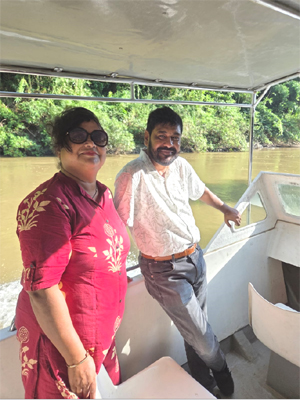 Narikel Kunja stands out as a key case. Built
with government investment, it has been handed over to a private agency. While
private involvement can sometimes improve efficiency, in this case services
have become expensive without a matching improvement in quality. Visitors
report that room rents are disproportionately high compared to the facilities
provided. The concern is not private partnership itself, but the lack of
transparency and regulation that ensures tourists get value for their money.
Narikel Kunja stands out as a key case. Built
with government investment, it has been handed over to a private agency. While
private involvement can sometimes improve efficiency, in this case services
have become expensive without a matching improvement in quality. Visitors
report that room rents are disproportionately high compared to the facilities
provided. The concern is not private partnership itself, but the lack of
transparency and regulation that ensures tourists get value for their money.
Roads: The First Requirement for Tourism:
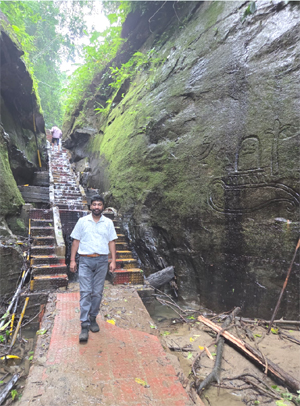 Road connectivity remains one of the biggest
hurdles for Tripura’s tourism. The Agartala Kamalpur road via Khowai,
Kanchanpur to Jampui Hill,
Udaipur-Amarpur-Chabimura-Dumboor-Narikel Kunja stretch has large
unfinished segments. Contractors often start work but abandon projects midway.
The Ambassa-Gandachhara road expansion has dragged on for five years without
completion, leaving long stretches unfit for vehicles. For tourism to flourish,
quality roads, safe transport, and affordable facilities are essential.
Road connectivity remains one of the biggest
hurdles for Tripura’s tourism. The Agartala Kamalpur road via Khowai,
Kanchanpur to Jampui Hill,
Udaipur-Amarpur-Chabimura-Dumboor-Narikel Kunja stretch has large
unfinished segments. Contractors often start work but abandon projects midway.
The Ambassa-Gandachhara road expansion has dragged on for five years without
completion, leaving long stretches unfit for vehicles. For tourism to flourish,
quality roads, safe transport, and affordable facilities are essential.
A Positive Step at Tripureswari Temple:
One shining example of improvement is the
renovation of Tripureswari Temple in Udaipur. It has been redesigned with
senior citizens and differently-abled visitors in mind, creating an inclusive
environment. This proves that with vision and commitment, Tripura can modernize
its tourism while respecting its heritage. Similar models can be replicated
across other sites.
Announcements Await Implementation:
Since 2018, the government has announced
numerous tourism projects. Nearly more than a dozen new initiatives have been
declared, but except for the Tripureswari Temple’s facelift, few have seen
visible progress. With timely implementation, these projects could redefine
tourism in Tripura.
Recommendations for Inclusive Tourism in
Tripura:
To turn challenges into opportunities, the
following steps are recommended:
-
Improve road connectivity with four-lane,
well-lit routes linking major tourist spots to district towns, railway
stations, and MBB Airport.
-
Set clear deadlines for road and
infrastructure projects, with public display boards showing project details,
contractors, costs, and timelines.
-
Introduce affordable transport services
including government buses, shuttle services, and online booking systems.
-
Ensure accessibility for senior citizens
and differently-abled visitors with ramps, railings, lifts, wheelchairs, and
smooth pathways.
-
Deploy eco-friendly vehicles such as
e-rickshaws and mini electric buses at major sites like Narikel Kunja and
Dumboor.
-
Create caregiver services with trained
staff to assist seniors and differently-abled tourists.
-
Develop budget-friendly hotels and
homestays under government or PPP models near every tourist center.
-
Maintain transparency in outsourcing of
government-funded tourism infrastructure and regulate pricing to prevent
exploitation.
-
Ensure quality and fair pricing of food
through regular inspections of hotels, guest houses, and restaurants.
-
Strengthen safety measures, especially at
eco-tourism sites where night-stays are currently unsafe.
-
Promote Tripura digitally using travel
apps, websites, and campaigns offering route maps, ticket booking, and local
guide services.
-
Train locals under “Atithi Devo Bhava” to
create a welcoming culture for tourists, while generating employment in
homestays, guiding, handicrafts, and transport.
-
Set up tourist information centers at all
major sites with brochures, leaflets, and guides.
-
Develop adventure tourism such as
trekking and river rafting at Rudrasagar, Chabimura, and Dumboor.
-
Encourage medical tourism by promoting
Ayurvedic wellness, yoga, and treatment facilities, particularly for
Bangladeshi visitors.
-
Launch cleanliness drives at all tourist
spots to keep locations free of waste and ensure accountability for
maintenance.
Conclusion: Tripura’s Tourism at a Turning
Point
Tripura has all the ingredients to become a
leading tourism state in India. Its natural beauty, cultural heritage, and
unique geographic location already attract thousands of visitors. What is
needed now is inclusive infrastructure, transparent management, and timely
project completion.
By ensuring accessibility for senior citizens
and differently-abled tourists, improving connectivity, and empowering local
communities, Tripura can position itself as not just a beautiful destination,
but also a model for inclusive, sustainable, and people-friendly tourism.
(Author: Jayanta Debnath, Senior Journalist
and Editor of tripurainfo.com. This travel report is based on visits to
Udaipur, Amarpur, Gandachhara, Dumboor, Chabimura, and Narikel Kunja.)
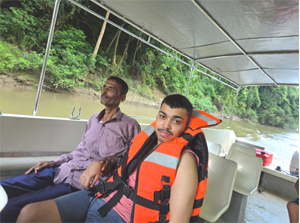
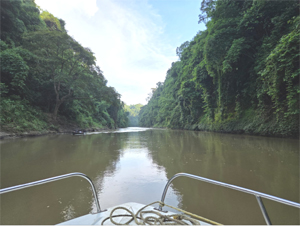
(Tripurainfo)
more articles...